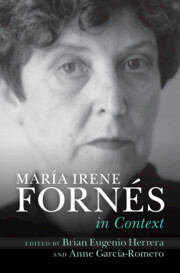Refine search
Actions for selected content:
179 results
7 - Countering State Sponsors of Terrorism
-
- Book:
- Terror Disrupted
- Published online:
- 18 December 2025
- Print publication:
- 22 January 2026, pp 128-139
-
- Chapter
- Export citation
9 - Blacklisting
- from Part I - Humanitarian Consequences
-
-
- Book:
- Economic Sanctions from Havana to Baghdad
- Published online:
- 28 November 2025
- Print publication:
- 18 December 2025, pp 169-191
-
- Chapter
-
- You have access
- Open access
- HTML
- Export citation
Chapter 6 - Money as Moral Calculus
- from Part II - Ethnography
-
- Book:
- Shapes in Revolution
- Published online:
- 07 November 2025
- Print publication:
- 20 November 2025, pp 170-206
-
- Chapter
- Export citation
Chapter 3 - Shapes of Integration
- from Part I - Historiography
-
- Book:
- Shapes in Revolution
- Published online:
- 07 November 2025
- Print publication:
- 20 November 2025, pp 60-97
-
- Chapter
- Export citation
Chapter 4 - Shapes of Ideology
- from Part I - Historiography
-
- Book:
- Shapes in Revolution
- Published online:
- 07 November 2025
- Print publication:
- 20 November 2025, pp 98-130
-
- Chapter
- Export citation
Chapter 9 - Conclusion
- from Part II - Ethnography
-
- Book:
- Shapes in Revolution
- Published online:
- 07 November 2025
- Print publication:
- 20 November 2025, pp 265-284
-
- Chapter
- Export citation
Chapter 7 - ‘Revolution Is Construction’
- from Part II - Ethnography
-
- Book:
- Shapes in Revolution
- Published online:
- 07 November 2025
- Print publication:
- 20 November 2025, pp 207-237
-
- Chapter
- Export citation
Chapter 8 - The House of Spirits
- from Part II - Ethnography
-
- Book:
- Shapes in Revolution
- Published online:
- 07 November 2025
- Print publication:
- 20 November 2025, pp 238-264
-
- Chapter
- Export citation

Shapes in Revolution
- The Political Morphology of Cuban Life
-
- Published online:
- 07 November 2025
- Print publication:
- 20 November 2025
Starring Esteban Montejo as Himself: Featuring the African Inspirations of the ‘Audiovisual Interface’, 1975/1812
-
- Journal:
- Journal of Latin American Studies , First View
- Published online by Cambridge University Press:
- 03 November 2025, pp. 1-33
-
- Article
-
- You have access
- Open access
- HTML
- Export citation
7 - Trajectories of Counterrevolution
-
- Book:
- Return of Tyranny
- Published online:
- 17 September 2025
- Print publication:
- 23 October 2025, pp 203-233
-
- Chapter
- Export citation
Chapter 3 - Island Periploi
-
- Book:
- American Modernism and the Cartographic Imagination
- Published online:
- 09 October 2025
- Print publication:
- 23 October 2025, pp 111-147
-
- Chapter
- Export citation
Chapter 4 - Stereophonic Boundaries
-
- Book:
- American Modernism and the Cartographic Imagination
- Published online:
- 09 October 2025
- Print publication:
- 23 October 2025, pp 148-182
-
- Chapter
- Export citation
5 - Revolutionaries in Search of a Revolution
-
- Book:
- Armed Internationalists
- Published online:
- 19 September 2025
- Print publication:
- 09 October 2025, pp 137-197
-
- Chapter
- Export citation

My Own Past
- Afrodescendant Contributions to Cuban Art
-
- Published online:
- 30 September 2025
- Print publication:
- 18 September 2025

María Irene Fornés In Context
-
- Published online:
- 27 August 2025
- Print publication:
- 07 August 2025
Chapter 23 - Elder
- from Part III - Culture, Society, and Politics
-
-
- Book:
- María Irene Fornés In Context
- Published online:
- 27 August 2025
- Print publication:
- 07 August 2025, pp 254-270
-
- Chapter
- Export citation
Chapter 9 - Susan Sontag
- from Part I - Places and People
-
-
- Book:
- María Irene Fornés In Context
- Published online:
- 27 August 2025
- Print publication:
- 07 August 2025, pp 90-100
-
- Chapter
- Export citation
Chapter 1 - “Lost in Translation”
-
-
- Book:
- Antifascism(s) in Latin America and the Caribbean
- Published online:
- 21 July 2025
- Print publication:
- 07 August 2025, pp 23-40
-
- Chapter
- Export citation
Chapter 16 - Translation and Adaptation
- from Part II - Theatre
-
-
- Book:
- María Irene Fornés In Context
- Published online:
- 27 August 2025
- Print publication:
- 07 August 2025, pp 171-180
-
- Chapter
- Export citation
